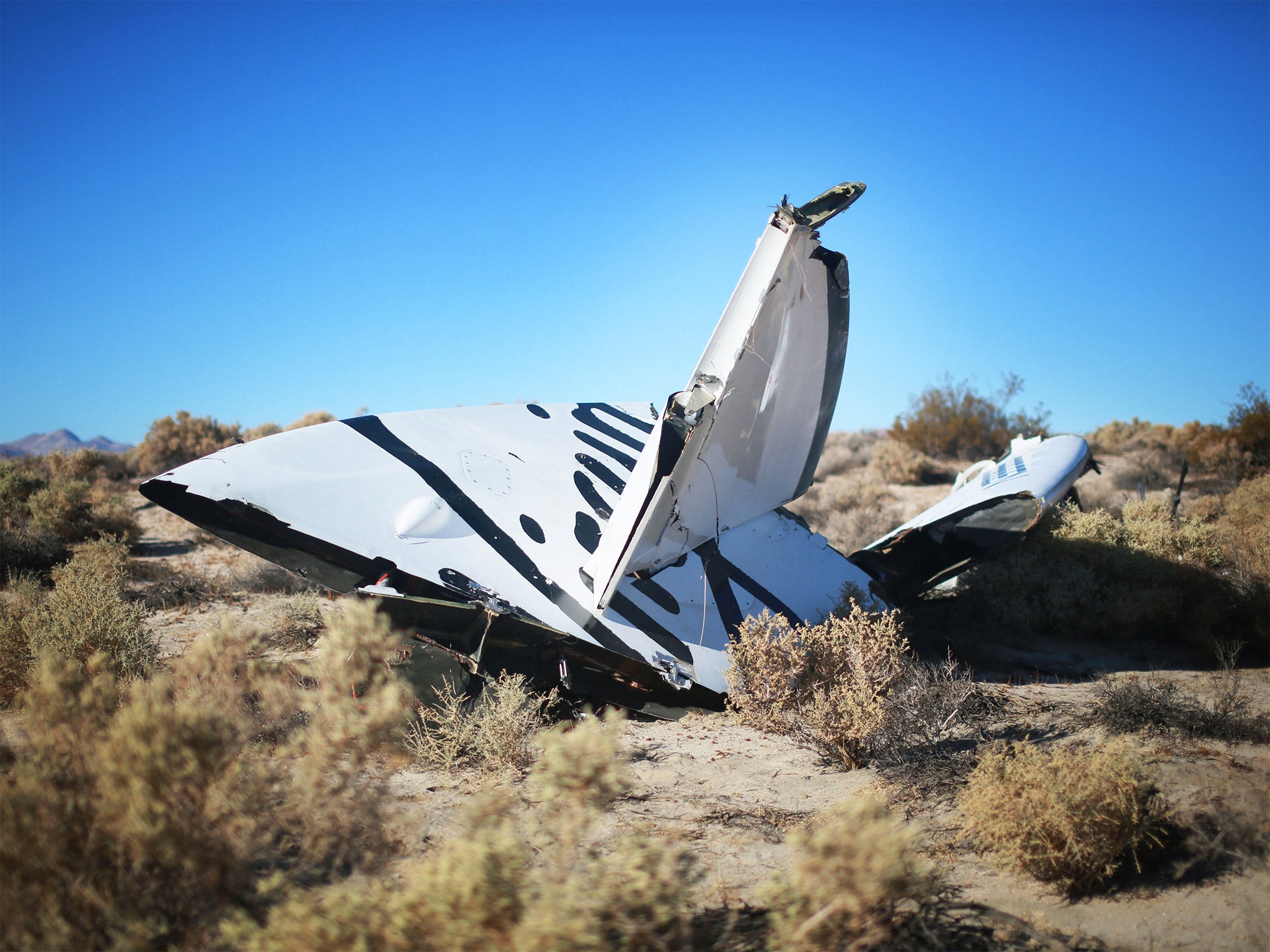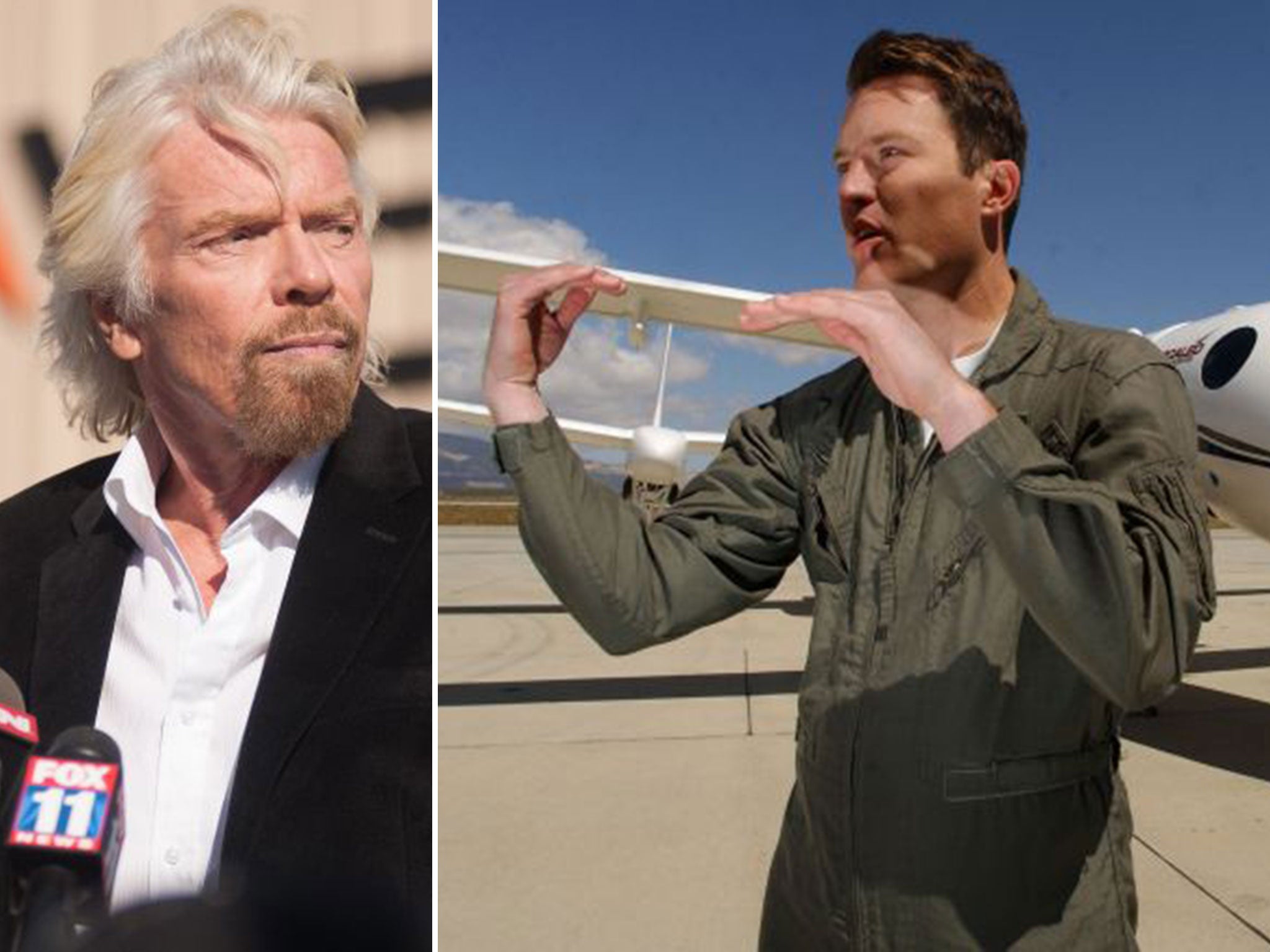Virgin Galactic crash: SpaceShipTwo accident in Mojave Desert blamed on human error, gaps in pilot training and braking issues
Despite the failure of Richard Branson's ambitious craft, plans for star-studded maiden flights are still all systems go

When Virgin Galactic’s SpaceShipTwo broke apart and plummeted from 50,000ft to the Mojave Desert during a test flight on 31 October 2014, Sir Richard Branson’s dream of a smooth ride to recreational spaceflight seemed to come crashing down with it.
Now, a nine-month investigation by the US National Transportation Safety Board (NTSB) has found that the crash was caused by a combination of human error, gaps in pilot training and an in-flight braking system that lacked the necessary fail-safes to prevent such an accident.
In its findings, announced on Tuesday, the NTSB determined that SpaceShipTwo’s “shuttlecock” wings had moved prematurely in the moments before the aircraft broke apart. The vehicle, built by Virgin Galactic’s partner Scaled Composites, had a pair of tail wings designed to “feather” in flight, thus increasing drag to slow the spacecraft during descent.
During SpaceShipTwo’s final flight – its first powered test in nine months – the NTSB found that co-pilot Michael Alsbury unlocked the tail wings too early, at Mach 0.8 rather than the planned Mach 1.4. That caused the wings to feather prematurely, leading to what Lorenda Ward, the lead NTSB investigator, described as a “catastrophic structural failure”. The aircraft had split from its carrier aircraft, WhiteKnightTwo, and fired its rocket engine moments before the accident.
Mr Alsbury was killed in the crash. A 39-year-old father-of-two, he had logged more than 1,600 hours as a test pilot for Scaled Composites. The pilot, 43-year-old Peter Siebold, managed to eject and parachute to safety, despite the high altitude.
This was the first time the NTSB had led an investigation into a manned space launch, and the agency considered several areas in their study of the crash, including the levels of pilot training, the design and quality of the aircraft’s build, and the depth of oversight of the project afforded to the US Federal Aviation Administration (FAA).
Investigators found that the spacecraft lacked a mechanism that might have prevented premature deployment of the wings, and that the pilots were insufficiently trained to deal with the problem. If the feathering system were not unlocked before SpaceShipTwo reached Mach 1.8, the flight would have to be aborted, and investigators speculated that Mr Alsbury may have unlocked the wings early to avoid being forced to abort later.

In its next iteration of the SpaceShipTwo craft, Virgin Galactic has reportedly added an inhibitor to prevent the feathering system from unlocking too early. The company tweeted: “We thank the NTSB for their professionalism, expertise, and insight, and we welcome the results of their investigation.”
At the time, the crash was considered potentially fatal to Branson’s space tourism ambitions, but Virgin Galactic has continued building a new version of the ship regardless. Scaled Composites is not responsible for building the new aircraft, which is being developed by the Virgin-owned outfit, The Spaceship Company. The company is expected to resume tests of the vehicle by the end of this year, though the long-delayed commercial space flights are likely to be put back until at least 2017.
Before last October’s devastating setback, Virgin Galactic had hoped to start ferrying passengers to the fringes of space sometime in 2015, ushering in a new era of tourism for those willing and wealthy enough to pay $250,000 (£150,000) for the privilege. Since the firm’s 2004 founding, some 700 customers are thought to have signed up to experience a flight to around 361,000ft, where they would enjoy several minutes of weightlessness before returning to Earth.
Join our commenting forum
Join thought-provoking conversations, follow other Independent readers and see their replies
Comments